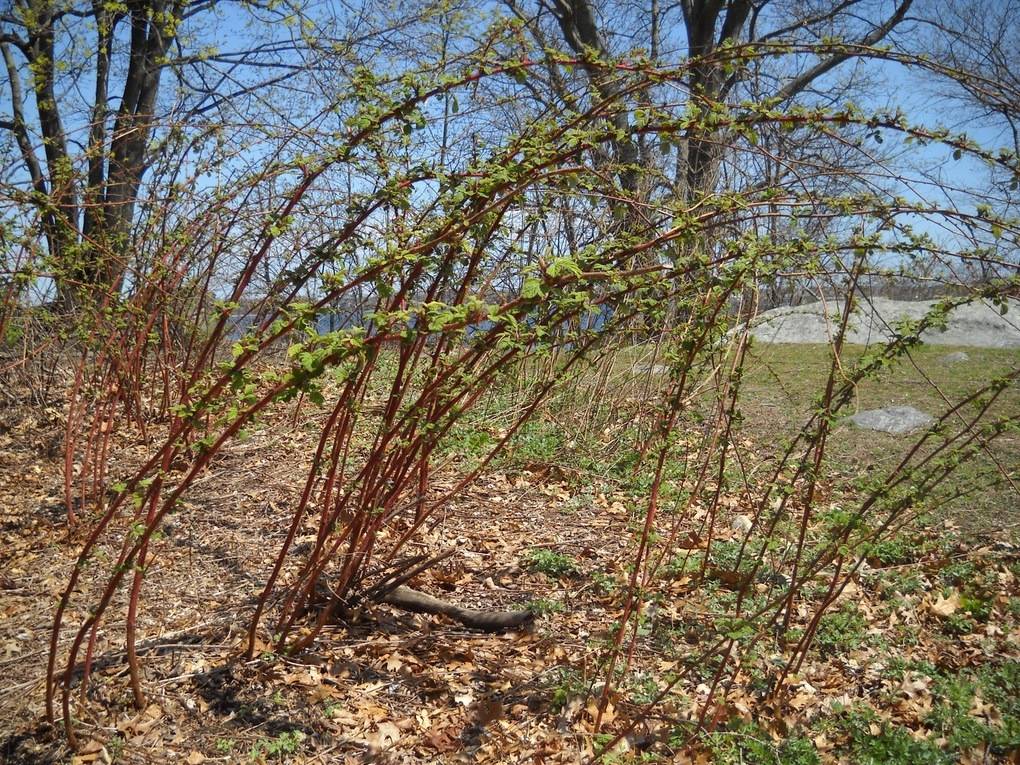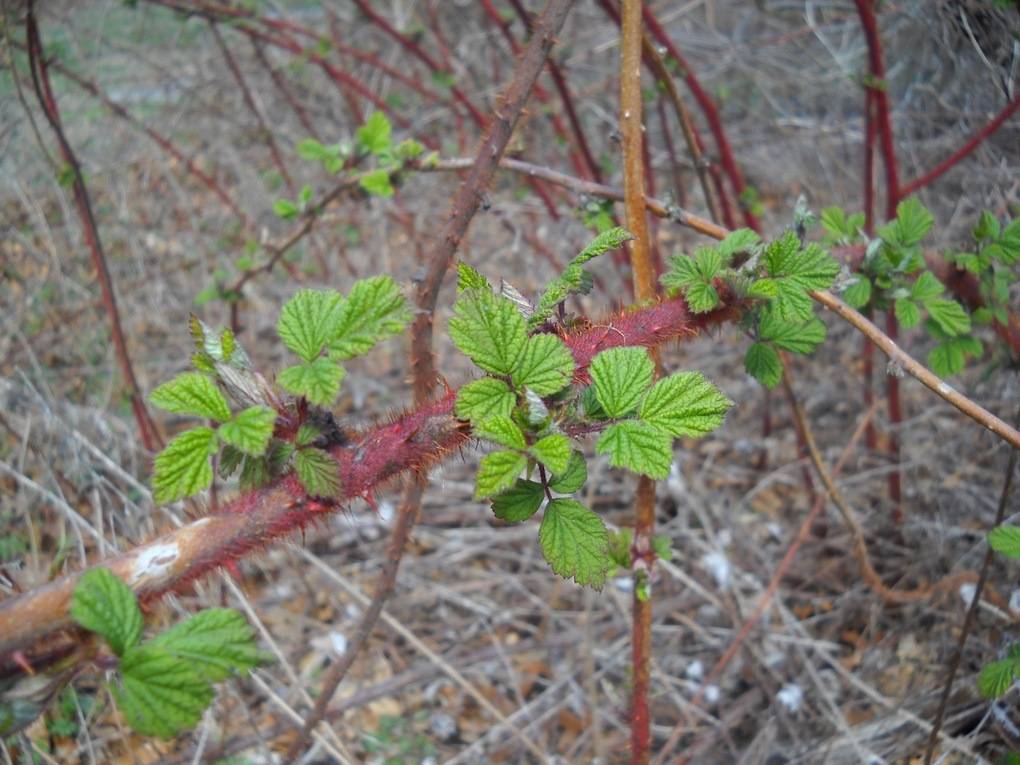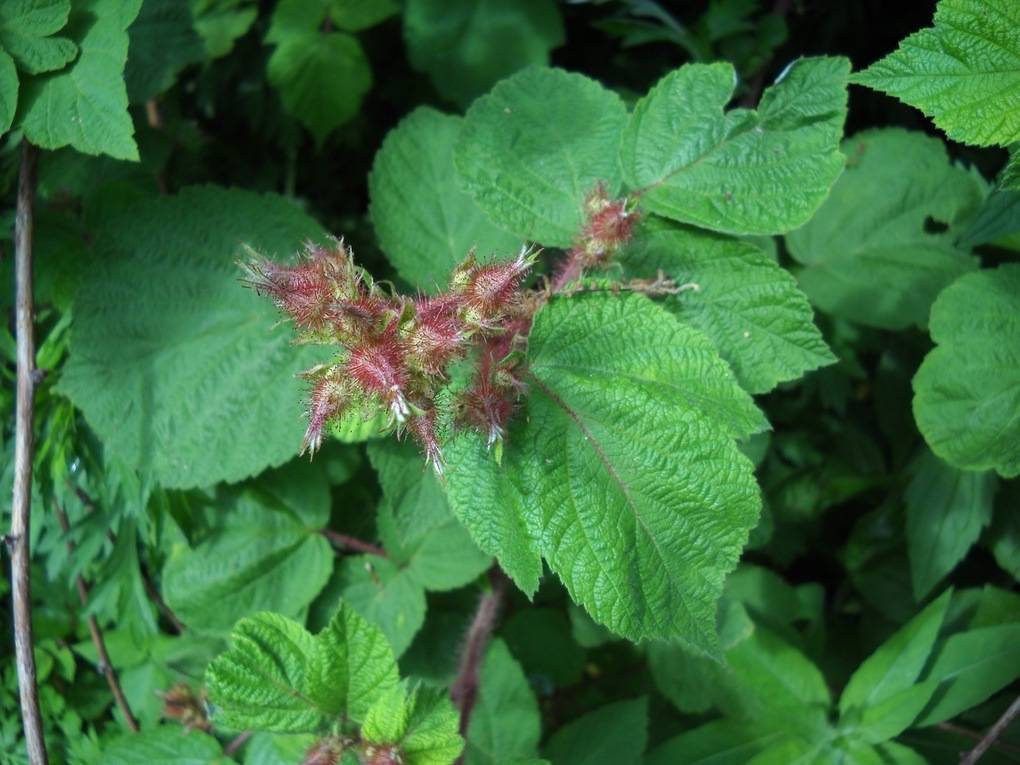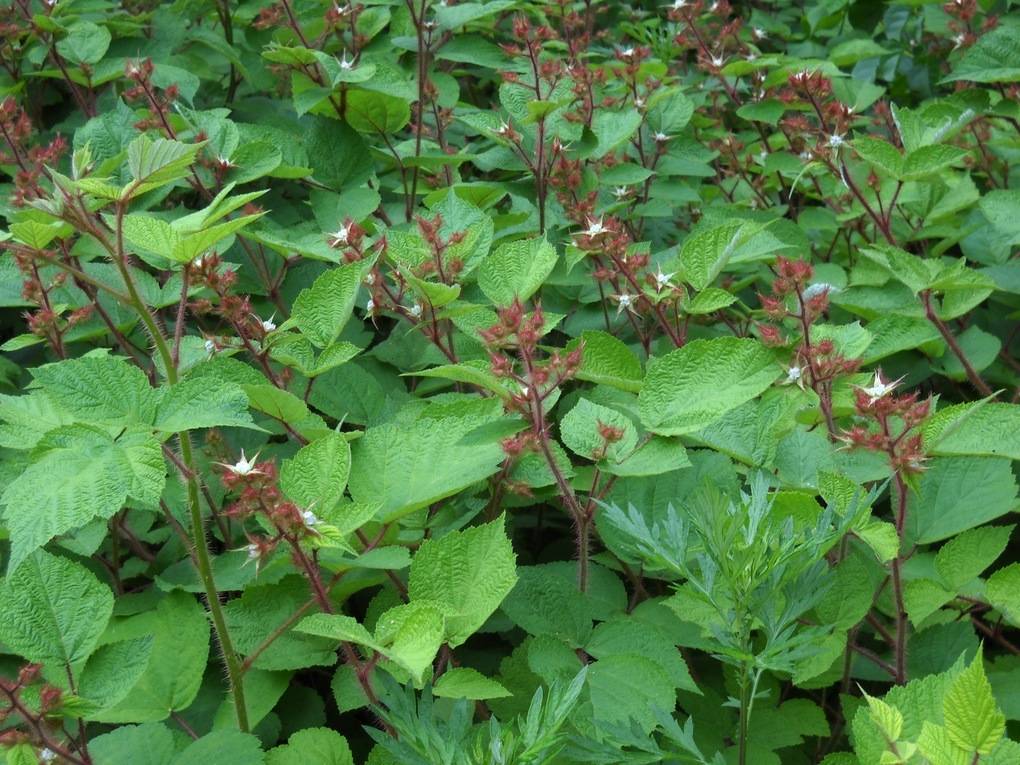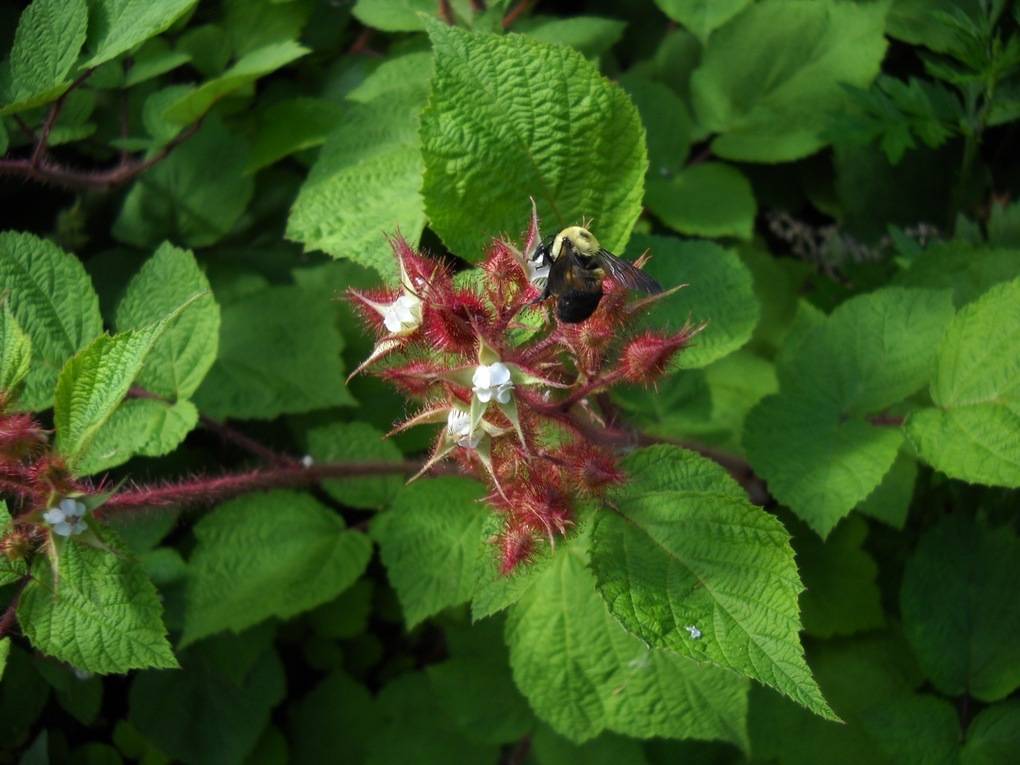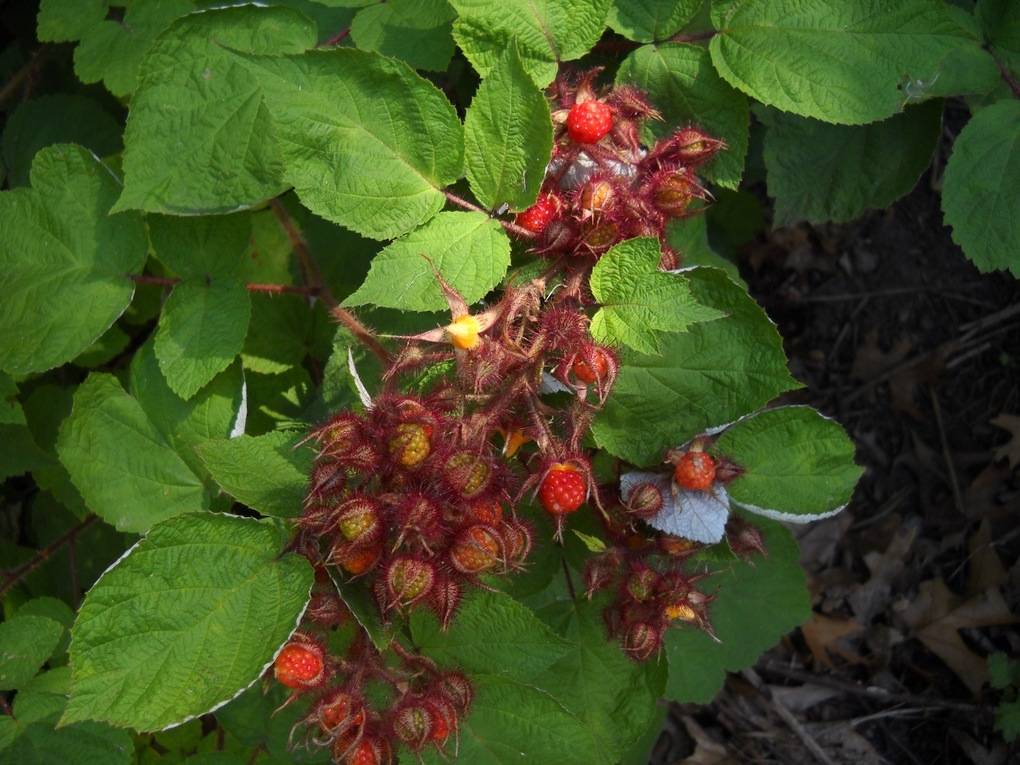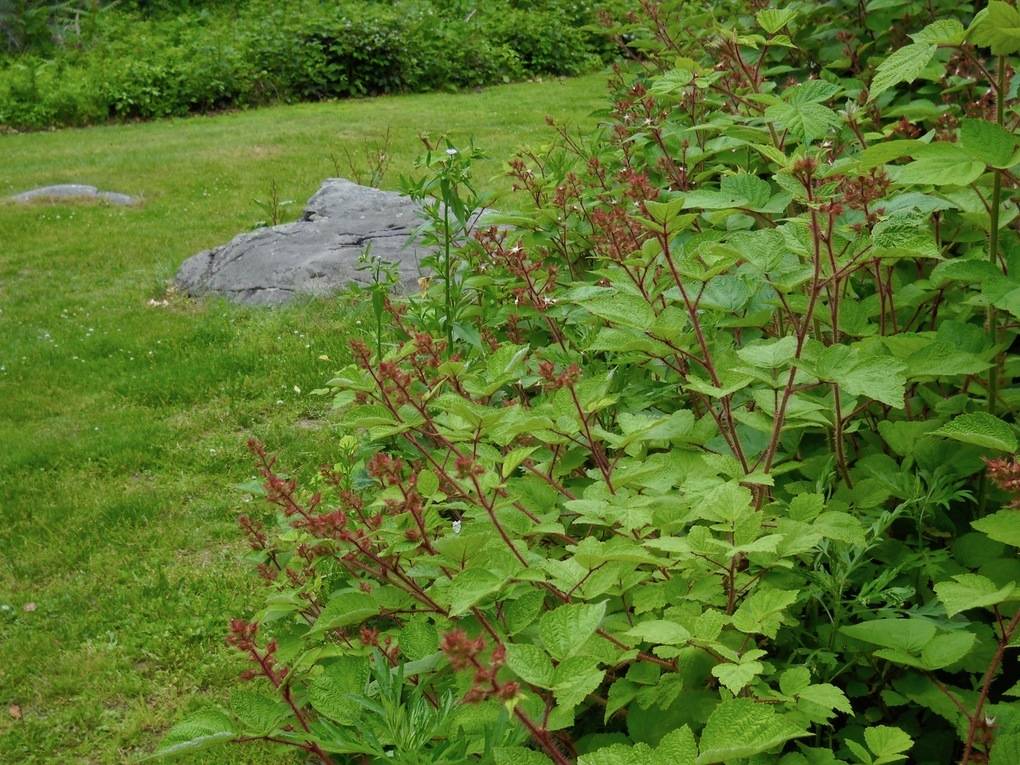wine raspberry
Wine raspberry is native to the eastern Asian countries of China, Korea and Japan. Initially introduced to North America in 1890 as an ornamental and as breeding stock for raspberries, it has escaped cultivation and has become naturalized in forests, open woods, fields, and roadsides.
At Salter Grove, a few clumps of wine raspberry stems can be found here and there within the upland woods, but it is most successful on the lawn south of the parking lot where it has formed a dense monospecific thicket.
Wine raspberry has perennial underground roots that produce biennial aboveground canes, or stems. In its first year, the stem grows unbranched to its full length and will only produce leaves. In its second year, the cane sends out side shoots which produce clusters of flowers at the tip.
The white petals of the flower are surrounded by a very bristly red calyx. The fruits are also encased in a bristly calyx and ripen over a two week period. They are quickly and eagerly removed by birds and humans alike, despite being surrounded by spiny leaves and branches.
Unmanaged, a single wine raspberry seedling can grow into an impenetrable thicket because a new plant can grow where an arching cane touches the ground. Its sale and possession is prohibited by law in Connecticut and Massachusetts where it is listed as a noxious weed.

